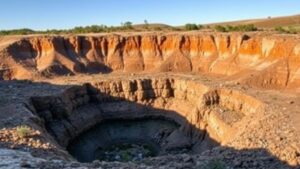Using Hand Rakes and Shovels to Expose Gold Pay Zones in Drylands
Using Hand Rakes and Shovels to Expose Gold Pay Zones in Drylands
Gold prospecting in dryland environments presents unique challenges and opportunities. Hand tools such as rakes and shovels play a crucial role in this process, allowing miners to expose pay zones effectively. This article aims to explore the methods and techniques for using these tools in arid regions, backed by practical examples and case studies.
Understanding Gold Pay Zones
Gold pay zones refer to layers of soil and sediment that contain economically recoverable gold. e zones often occur in proximity to ancient riverbeds, which have since dried up. In dryland environments, the task of locating these zones is typically hampered by the compacted nature of the soil.
Geological surveys can provide initial insights, but practical exploration using hand tools remains essential. Familiarizing oneself with the distinctive characteristics of pay zones–including color, texture, and composition–can significantly improve the chances of a successful find.
The Role of Hand Rakes and Shovels
Hand rakes and shovels are invaluable in the process of exposing gold pay zones. e tools allow for greater control and precision in digging operations compared to heavy machinery. Their benefits include:
- Accessibility: Hand tools can be used in remote areas where machinery cannot operate.
- Cost-Effectiveness: They require far less initial investment, making them ideal for small-scale miners.
- Soil Sensitivity: Hand tools minimize disruption to the surrounding environment, maintaining ecosystem integrity.
Techniques for Effective Use
When using hand rakes and shovels, specific techniques can enhance productivity and accuracy:
- Layered Excavation: Begin digging at the surface layer and gradually work downwards. This method prevents unnecessary disturbance of lower sediment layers that could contain gold.
- Sifting and Classifying: Use a hand rake to gently sift through loosened soil. This technique effectively separates larger rocks from finer material where gold may be found.
Case Studies and Real-World Applications
Several successful gold prospecting operations have utilized hand rakes and shovels to uncover pay zones. For example:
- The California Gold Rush: The famous 19th-century gold rush saw many prospectors use rudimentary tools like shovels and rakes to unearth gold in riverbeds.
- Modern Small-Scale Mining: In regions like Western Australia, small-scale miners often rely on hand tools to find gold deposits in their local dryland environments, demonstrating the continued relevance of these methods.
Challenges and Considerations
While hand rakes and shovels are useful, miners should be aware of potential challenges:
- Physical Labor: Prospecting in drylands can be physically demanding, requiring a good level of fitness.
- Weather Variability: Extreme heat in dry areas makes it essential to plan excavations during cooler parts of the day.
Conclusion and Actionable Takeaways
Using hand rakes and shovels to expose gold pay zones in drylands can be an effective and rewarding endeavor for prospectors. By understanding the characteristics of pay zones, employing proper techniques, and learning from historical examples, miners can increase their chances of success.
As a starting point, prospectors should:
- Conduct thorough research on the geology of their chosen area.
- Invest in high-quality hand tools designed for their specific purpose.
- Plan excavation sessions for optimal weather conditions and personal endurance.
By following these guidelines, aspiring gold miners can navigate the complexities of dryland prospecting with greater confidence and effectiveness.

